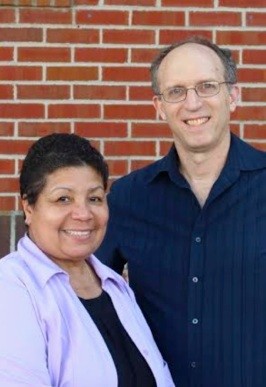How educators are using and sharing the Question Formulation Technique around the country and world
by Chris Orchard
For most of us, a broken camshaft might lead to some salty language. It means an expensive repair bill and a headache commute while our car is at the mechanic’s.
For Alabama’s Jeremy King, a broken camshaft is a chance to teach fellow educators how to use the Question Formulation Technique with students.
When his Volkswagen broke down, the Baldwin County educator – who Tweets from @bctechteacher – dragged his camshaft into an eMINTS conference session, dumped it on a table, and used it as a Question Focus (QFocus). Take a look:
Don't know what it is? Use #qft from @RightQuestion. Our #emints group did great with it tonight. #baldwinproud pic.twitter.com/6sFPCiFOC6
— Jeremy King (@bctechteacher) January 24, 2017
Every week, we hear from educators like King, usually on Twitter, about the clever and innovative ways they’re sharing the Question Formulation Technique with colleagues and students. We love these stories. It would be nigh impossible to share every Tweet, but here’s a sampling of recent examples.
Mrs. Myers (@MrsMyers2114) taught her students about the Cold War by having them practice under-the-desk “Duck and Cover” drills – something American school children learned about in the 1950s – while drawing bomb shelters.
Learning how Americans reacted to the chance of a nucelar attack in the '50s by drawing their own shelters in the "duck and cover" position pic.twitter.com/AMhDo6VOow
— Mrs. Myers 🍎 (@MrsMyers2114) March 10, 2017
She also used the Question Formulation Technique. As a Question Focus she showed students a mysterious map of the world featuring flags, numbers, and dots:
Image used for our class QFT activity today! pic.twitter.com/8VLjJHi0Fi
— Mrs. Myers 🍎 (@MrsMyers2114) March 6, 2017
Partaking in a QFT activity today as an intro into our Cold War unit! pic.twitter.com/zVxOG7JNrn
— Mrs. Myers 🍎 (@MrsMyers2114) March 6, 2017
If you’re interested in using this map as a Question Focus, it comes from a video called “1945-1998,” by Japanese multimedia artist Isao Hashimoto. It maps every nuclear-weapon explosion from between those years. Each second of the video represents one month in real time.
In Argentina, Alli Poirot (@Ms_Poirot) shared questions 10th-grade modern history students asked about conspiracy theories.
10th gr ModHist uses QFT to consider the idea of conspiracy theories. Fake news + history =?? Aliens? #aelincoln #qft @RightQuestion pic.twitter.com/P0uTaRi9ye
— Alli Poirot (@Ms_Poirot) February 6, 2017
Questions include, “How are conspiracy theories made?” “How much and what kind of evidence is required for a conspiracy theory to be considered true?” and, our favorite, “Is Man the alien that killed the dinosaurs?”
With questions like that, we regret not knowing the Question Focus (Ms. Poirot, if you’re reading this, could you Tweet it to us?), but if you’re interested in using the QFT to teach media literacy, you can find some QFocus ideas here.
In Maine Township High School District just outside of Chicago, Matthew Parrilli (@mattparrilli), chair of a high school English department, developed a unit stemming from a Chicago radio story called “The View From Room 205: Can schools make the American Dream real for poor kids.”
The story follows, for an entire year, a fourth-grade class at the William Penn Elementary School, located in a Chicago neighborhood where the per-capita income is about $12,000 and where four homicides occurred in the month of December 2016 alone.
Parrilli gave his students the following Question Focus: “Public schools are meant to give each student, regardless of income level, an equal chance to succeed.”
This #QFT opens our study of the powerful "The View from Room 205" from @WBEZeducation @RightQuestion #QuestionWeek https://t.co/IX5CQSFjXa pic.twitter.com/sF84SiuDE0
— Matthew Parrilli (@mattparrilli) March 14, 2017
Some of his students’ priority questions were, “How does low or high income affect the chances of succeeding?” and “What do the public schools consider as succeeding?” Check them out:
Today's QFocus for #QuestionWeek,
Public schools are meant to give each student, regardless of income level, an equal chance to succeed. pic.twitter.com/7GmfutPAts— Matthew Parrilli (@mattparrilli) March 14, 2017
WBEZ, the National Public Radio affiliate that produced the radio story, also Tweeted about Parrilli’s efforts.
So cool (and such an honor!) to see teachers turn our radio work about education into lessons at school! https://t.co/4t1V3a0ryY
— WBEZeducation (@WBEZeducation) March 16, 2017
For a lesson about plant and animal structures, Courtney Leard (@CourtneyLeard) had her fourth-grade students ask questions about this QFocus: “Plants and animals have internal and external structures that function to support survival, growth, behavior, and reproduction.”
#QFT is the coolest way to launch a new unit! @RightQuestion check out these 4th graders @FountaindaleES @smithlins1 ! #FDELearns #wcpsmd pic.twitter.com/8q7OMPYoJU
— Courtney Leard (@CourtneyLeard) February 27, 2017
Jorey Beamesderfer (@joreyb) started an elementary-school unit on ancient Egyptians with the QFocus, “Ancient Egyptians believed in the afterlife.” Priority question: “Who made them believe in the afterlife?”
@RightQuestion "Ancient Egyptians believed in the afterlife" as Q-focus. Great start to the unit! pic.twitter.com/0RIZqnmd8r
— Jorey Beamesderfer (@joreyb) February 18, 2017
Educators are branching out beyond the classroom. The Kentucky Valley Educational Cooperative, which has embraced the Question Formulation Technique as a regional practice throughout the Appalachian area, presented their QFT work to Kentucky state legislators, according to Kimberly Sergent (@kserge7), an educator who has shared the QFT with educators across Eastern Kentucky.
@RightQuestion Sharing our work in the QFT with Kentucky legislators! @KVEC_ARI #KVEC_QFT pic.twitter.com/ItIlOvAFMi
— Kimberley Sergent (@kserge7) February 7, 2017
Kimberly Tahsuda (@Ms_Tahsuda) and Jennifer Brickey (@Mrs_Brickey) used the QFT with colleagues in the Oxnard Union High School District in California. They considered the statement, “Questions are more important than the answers.”
Feeling lucky to spend my morning sharing #QFT to #ouhsdpd with @JennBrickey @RightQuestion pic.twitter.com/biUz8m9m7u
— Kimberly Tahsuda Nelson (@Ms_Tahsuda) March 20, 2017
“What’s the end goal?” one educator asked. (It’s an excellent question we try to address in a brief introduction to our free online lesson-planning tools; in short, you begin with establishing an end goal and build your QFT lesson from there.)
Educators around the country have grappled with how to teach about the recent presidential election, which stirred up raw passions in communities across America. Imagine her students’ surprise when Kelly Grotrian (@MsGrotrian) showed them a strange-looking electoral map from 1976.
#qft on election of 1976 .@RightQuestion @EBSocialStudies pic.twitter.com/FdkYmNZDSI
— Kelly Grotrian (@KEGrotrian) March 21, 2017
“Why are some Southern states blue?” a student asked.
Or, go back further in time. Vivian Carter (@vccarter3), another educator from Eastern Kentucky, showed her students two potent political cartoons of Abraham Lincoln.
@rightquestion@vccarter3students diving deep into inquiry at Hazard High School using #QFT#KVEC_ARI#KVEC_QFT pic.twitter.com/WbVX42R3C8
— Vivian Carter (@vccarter3) January 26, 2017
“Why does he have a devil’s face on one of the images?” a student asked.
These are just some of the many great examples we see on Twitter every week. You can find us at @RightQuestion. Also, we have more in-depth discussions about the Question Formulation Technique and related issues within our Educator Network, which is free to join. Keep the examples coming!




Speak Your Mind